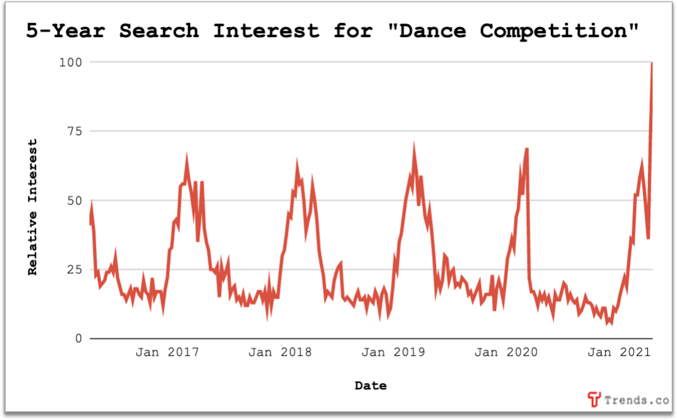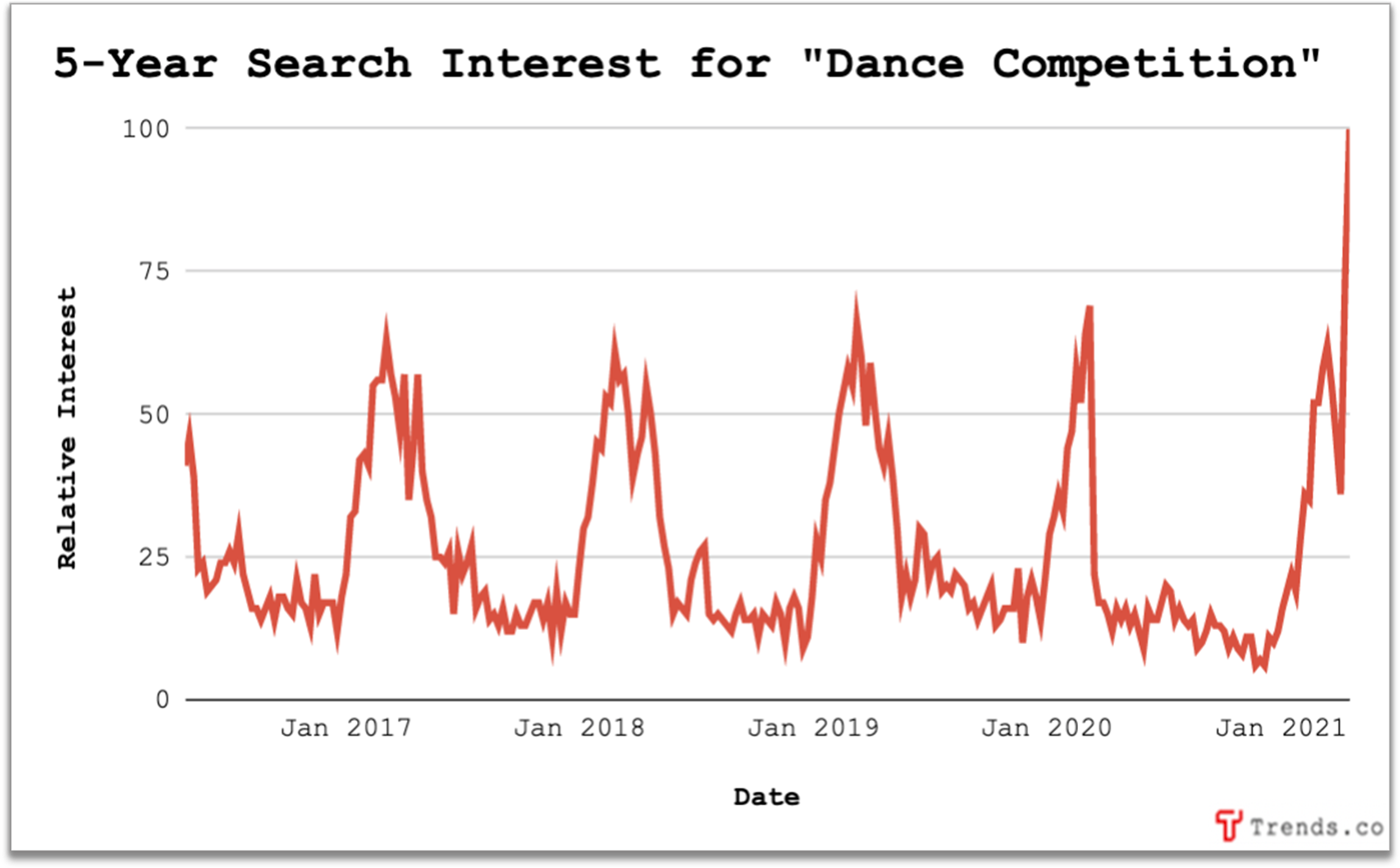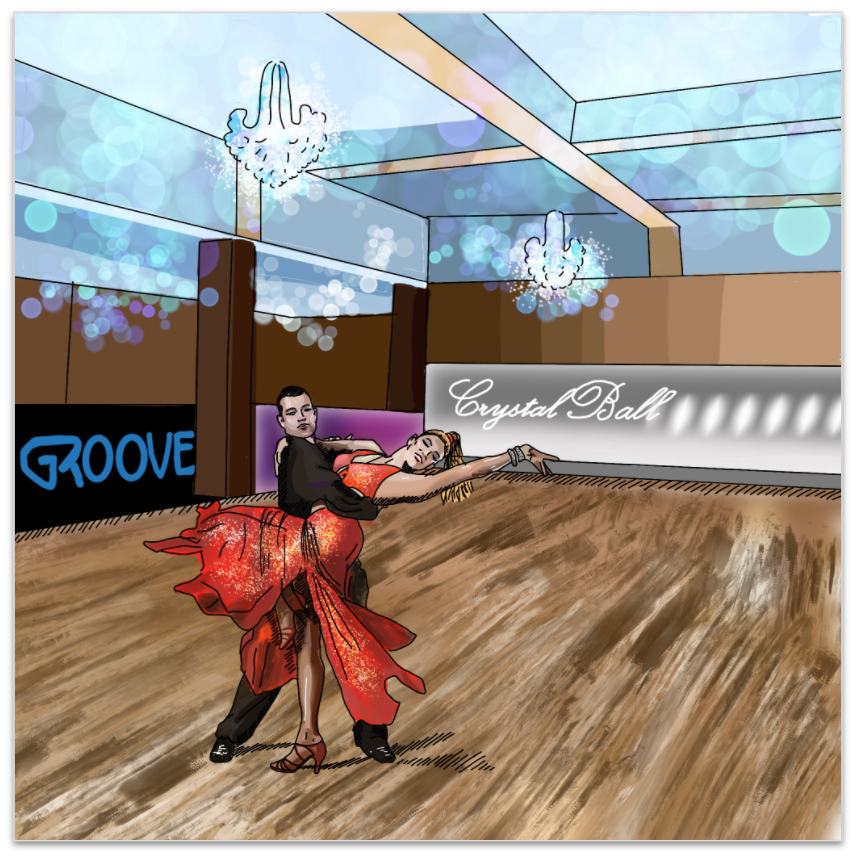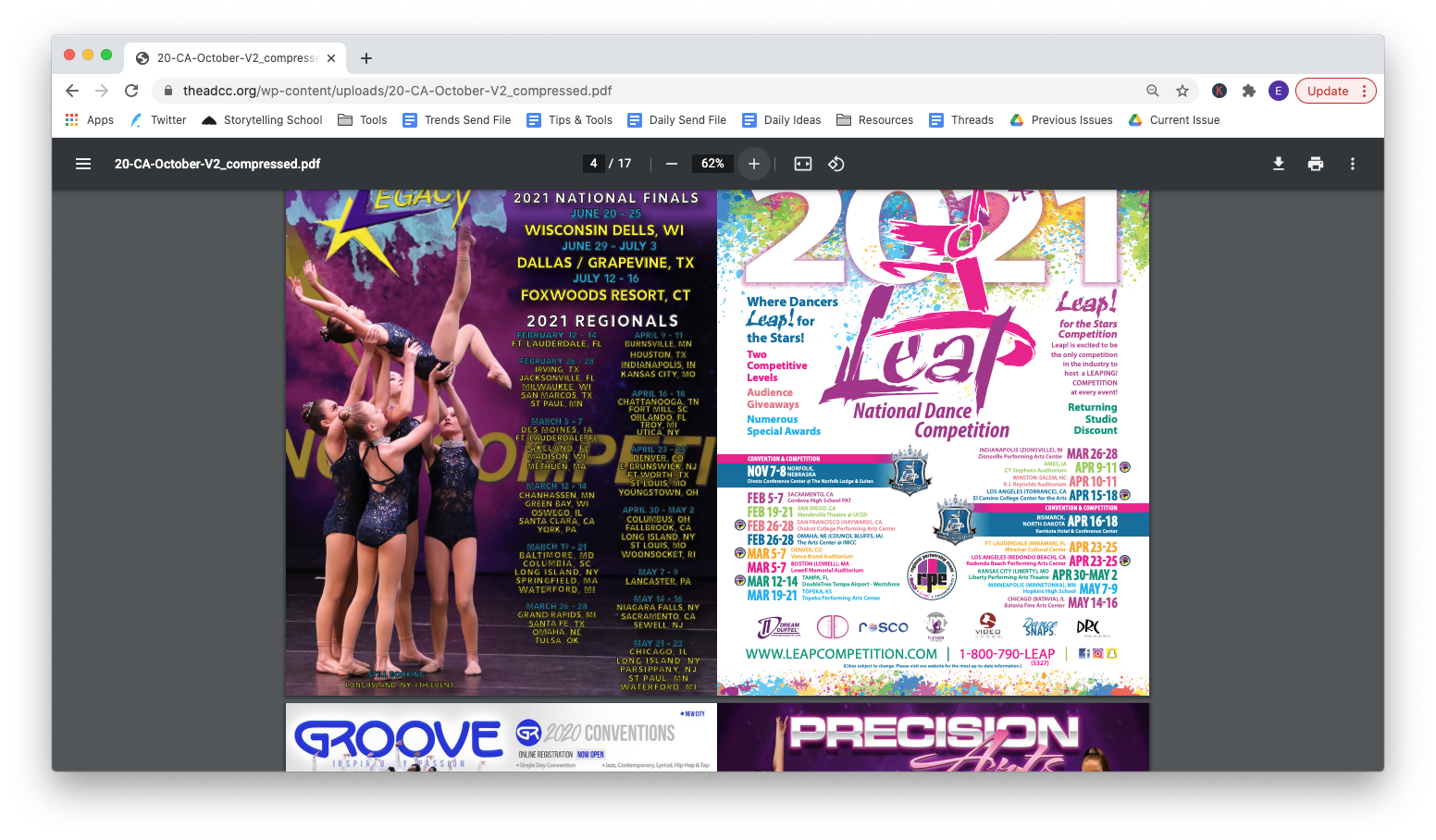nlopchantamang.com
Dance Competitions Are Having the Time of Their Life
Ethan Brooks

The Signal: Searches for “dance competition” have quadrupled in recent months. These businesses, which were some of the first to be disrupted by COVID-19, sustained heavy losses in 2020. Now demand is higher than it has been in years.
Background: Dance competition companies are essentially event companies. Their business model works like that of a conference or trade show (which we wrote about here).
Each brand organizes a series of competitions in different cities, and makes their money from:
- Dancers who pay to enter the competitions.
- Spectators who buy tickets.
- Sponsors who want to reach both of those audiences.
Some, like Crystal Ball, focus on one kind of dance (ballroom) while others, like Groove, host competitors from a dozen or more genres. Teams typically pay $40-$60 per dancer and range in size from a few members to several dozen.
According to the New York Times, there aren’t any official figures on the number of competitive dancers in the US, but in 2016, one competition called Showstopper hosted 52k competitors. At $40-$60 per dancer, that’s ~$2m-$3m/yr before factoring in spectator ticket sales or sponsorships.
The Opportunity: Dance competitions faced enormous obstacles in the early days of the COVID-19 pandemic.

Many of them were forced to cancel events, offering credits and refunds to dancers, ticket holders, and sponsors while simultaneously losing tens or even hundreds of thousands of dollars on venue bookings, signage, and trailers full of pre-made trophies that expired.
Now, demand is at a 5-year high, offering interesting opportunities in...
Events for Adult Dancers: The most visible opportunity is to launch a dance competition of your own. While kids’ competitions are popular and lucrative, there’s lots of demand among adults too.
“If you're an adult, you lose opportunities to perform as a dancer,” April MacLean, Trends’ community manager and a longtime competitive dancer, told us. “These competitions are one of the only ways that adults still have to get out there and work their craft.”
The gap between supply and demand means founders could probably succeed by simply copying the playbook of an existing competition (like Groove or Beyond the Stars), many of which sell out months in advance.
But there’s room to innovate too. A growing number of dancers are critical of the competitive dance circuit, April told us, feeling that it either incentivizes the wrong kinds of behavior, or undermines the creativity dance is built on.
Take inspiration from the American College Dance Association (ACDA), whose multiday conventions offer a refreshing alternative for college students. Unlike a typical dance competition, the ACDA:
- Focuses on educating and inspiring dancers, requiring all schools to submit 1 piece choreographed by a student (rather than faculty) to involve students in the creative process.
- Limits the competition to a small portion of the overall event, and judges performers based on creativity, rather than rigid templates.
- Fosters connections between dancers from different schools, whereas typical competitions encourage contestants to keep to themselves.
“If somebody took that and made that for the adult dance world, there would be huge opportunity there,” MacLean said.

Video Distribution: Dance competitions typically ban people from taking photos or video of an event because:
- Choreography is copyrightable, and is a dance crew’s intellectual property.
- Many events are full of children, who need a certain level of protection.
As a result, dance competitions usually hire a company to shoot and distribute video/photo packages for the dancers.
We wrote about the opportunities in niche sports streaming here. But there’s another opportunity to build software that helps with secure distribution.
One app, DanceBug, partners with contests offering a secure way to distribute videos to dancers, their schools, and parents.
But their app gets poor reviews and their website doesn’t work well, meaning someone with more technical expertise could succeed with a competing product.

Publishing: The competitive dance niche is perfect for a newsletter or other media publishing business because:
- There are very few publications despite tens of thousands of dancers around the world.
- The publications that do exist are monetizing at high rates, indicating a loyal and engaged audience.
The Association of Dance Conventions and Competitions (ADCC), for example, runs a magazine called The Competitive Advantage. But the entire magazine is just a series of full-page ads for upcoming dance competitions with no insights or articles for readers. Despite this, advertising in the magazine still costs ~$2k per issue.

Another publication, Dance Business Weekly, writes better content targeted at owners of dance-related businesses, and monetizes at an incredibly high $200CPM in their email. The newsletter reaches ~14.6k people, and costs ~$2.9k to advertise in.

Use our insights on the newsletter business to launch a competing publication in this space, and tap dance your way to the bank.


Leave a Comment